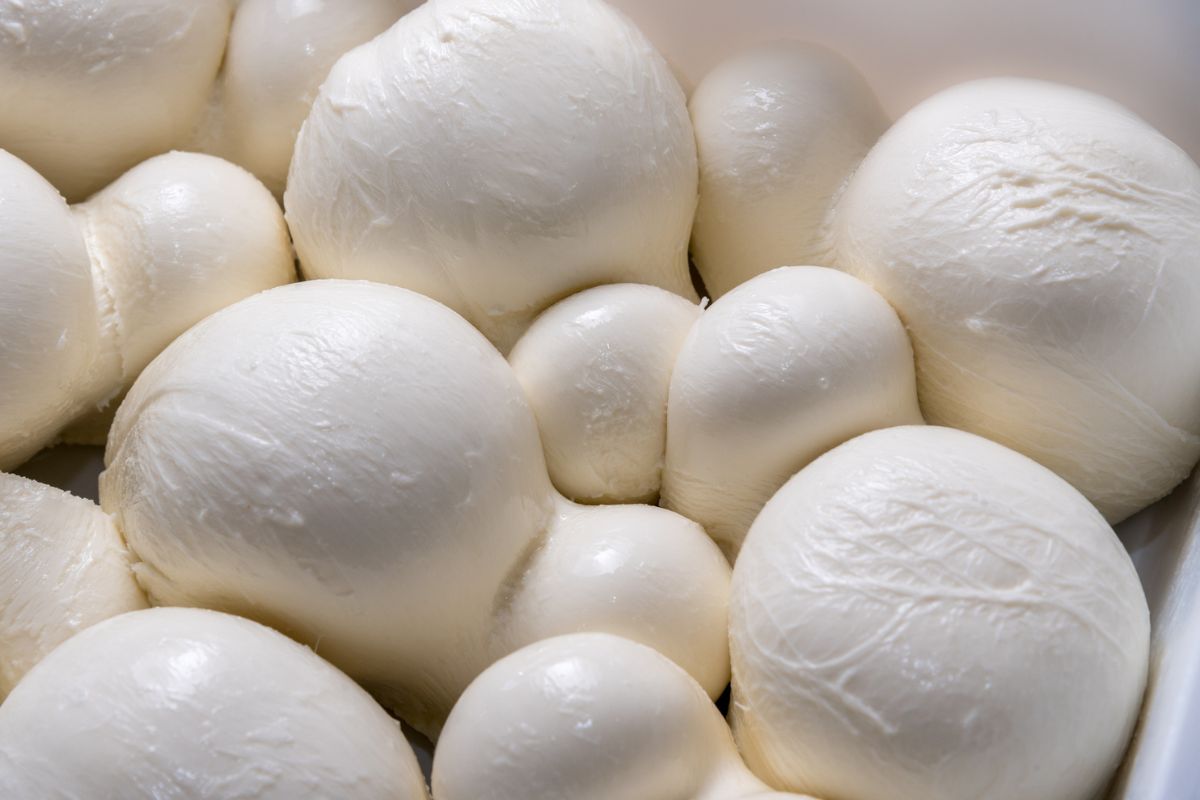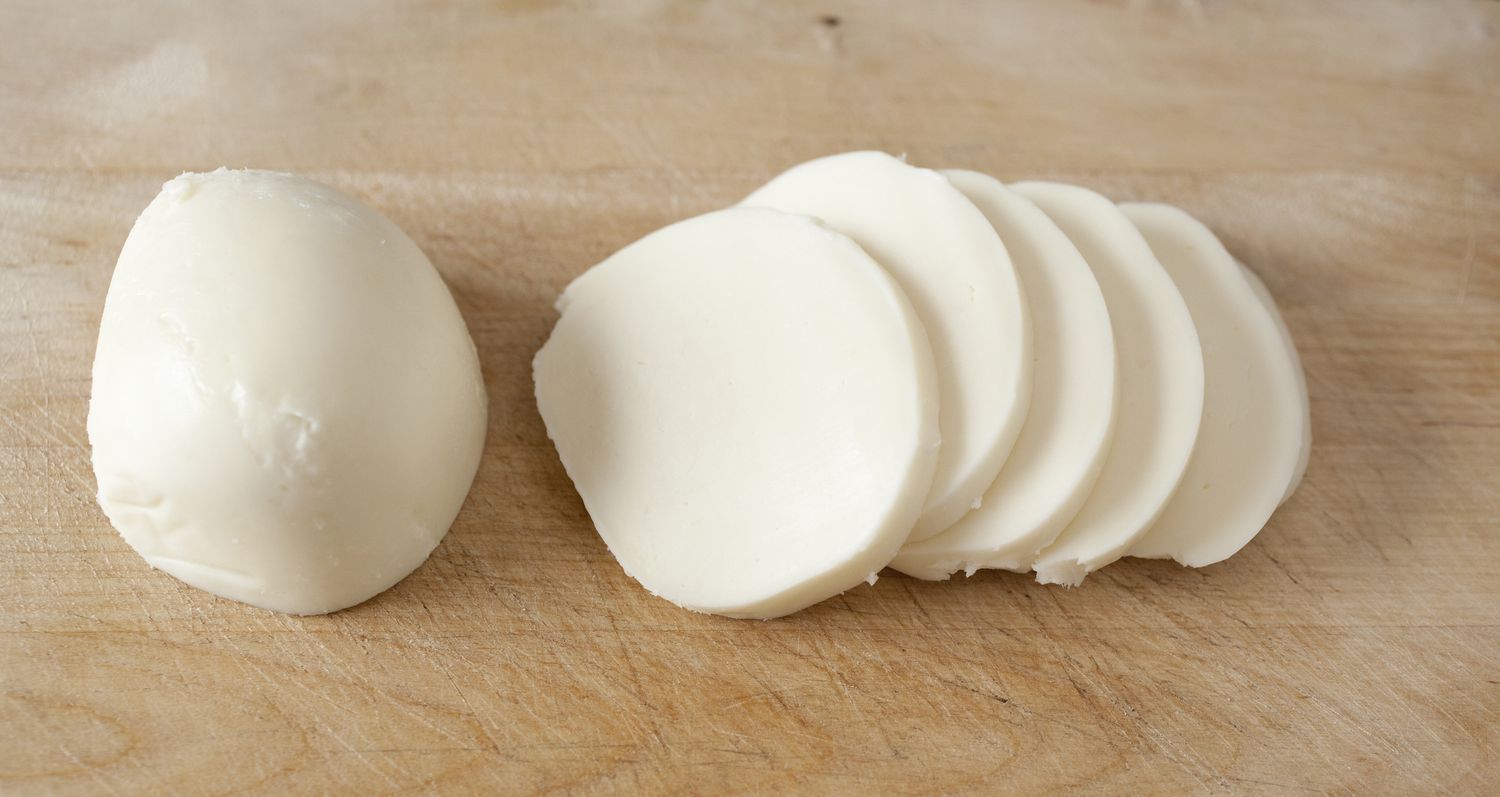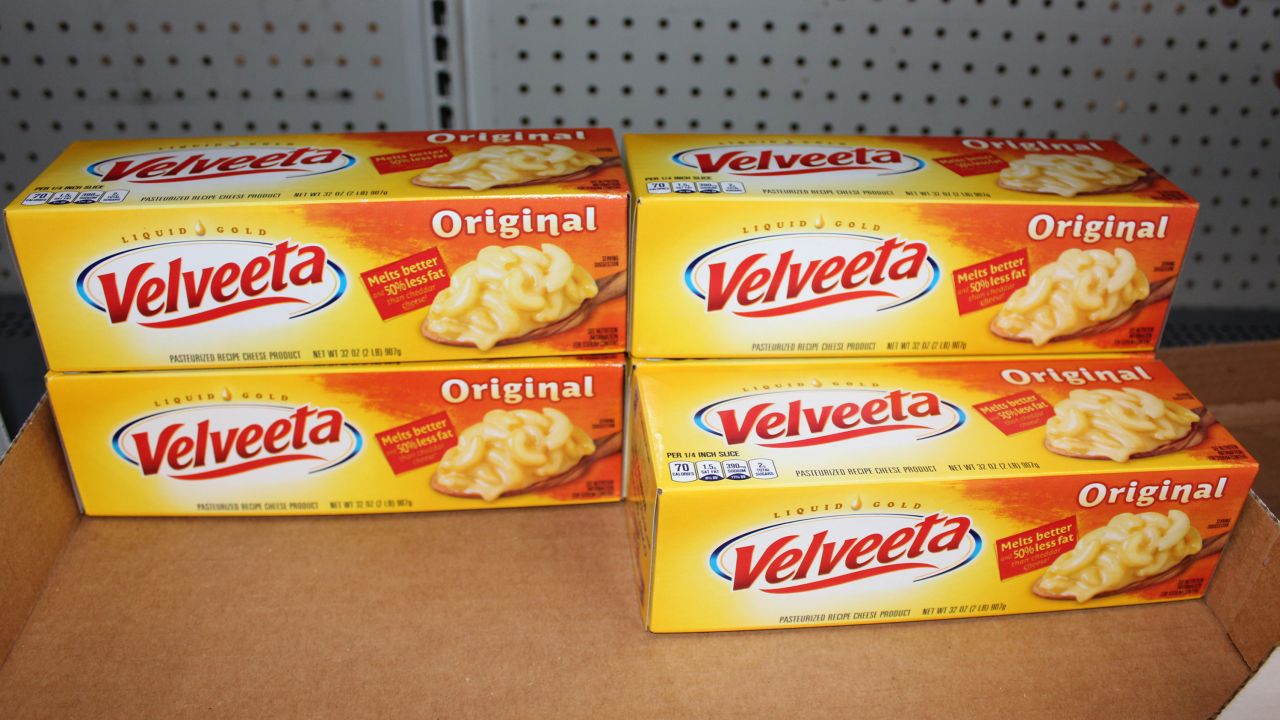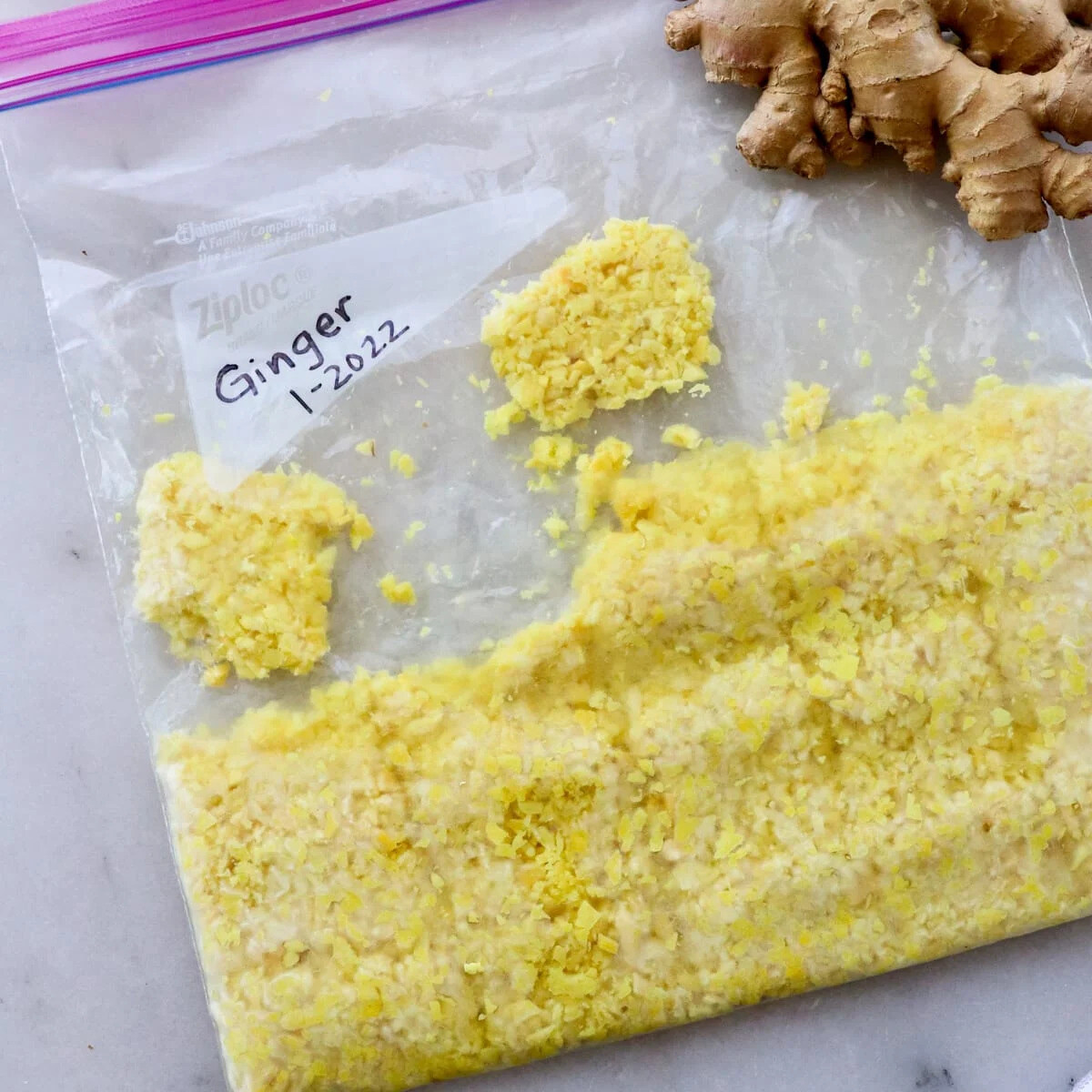

Articles
How To Store Freshly Grated Cheese
Modified: January 9, 2024
Learn about the best ways to store freshly grated cheese and keep it fresh for longer in this informative article.
(Many of the links in this article redirect to a specific reviewed product. Your purchase of these products through affiliate links helps to generate commission for Storables.com, at no extra cost. Learn more)
Introduction
Grated cheese is a versatile ingredient that can add a burst of flavor to many dishes. Whether you prefer Parmesan, cheddar, mozzarella, or any other type of cheese, grating it fresh can elevate your culinary creations to a whole new level. However, if you find yourself with excess grated cheese, you may be wondering how to store it properly to maintain its freshness and quality.
Properly storing freshly grated cheese is crucial to prevent it from spoiling, getting clumpy, or losing its flavor. Factors such as temperature, moisture, and air exposure can all affect the shelf life and taste of grated cheese. In this article, we will explore the best practices for storing freshly grated cheese, as well as some tips for long-term storage. So, if you want to ensure your grated cheese stays at its best for as long as possible, keep reading!
Key Takeaways:
- Properly storing freshly grated cheese is crucial to maintain its flavor and quality, providing convenience, cost-effectiveness, and creative flexibility in cooking.
- Airtight containers, plastic wrap, and freezing are effective storage options for grated cheese, ensuring optimal freshness and flavor for extended periods.
Read more: How To Store Grated Cheese
Why Store Freshly Grated Cheese?
You may be wondering why it is necessary to store freshly grated cheese when you can simply use it immediately. While it’s true that using freshly grated cheese right away can provide optimal flavor and texture, there are several reasons why you might want to store it for future use:
- Convenience: Grating a large amount of cheese at once can save you time in the kitchen. By storing the excess, you’ll have readily available grated cheese whenever you need it, whether it’s for sprinkling over pasta, topping a salad, or melting on a pizza.
- Cost-effectiveness: Buying cheese in bulk and grating it yourself can be more economical than purchasing pre-packaged grated cheese. Storing freshly grated cheese allows you to take advantage of bulk discounts and ensures you won’t waste any cheese.
- Control over quality: When you grate cheese fresh, you have control over the quality and type of cheese you use. Storing it properly maintains the flavor and moisture content, ensuring that you can enjoy the same taste and texture when you use it later.
- Creative flexibility: Having grated cheese on hand gives you the freedom to experiment with different dishes and recipes. You can easily incorporate cheese into your cooking without the need to grate it every time.
By understanding the benefits of storing freshly grated cheese, you can make the most out of your culinary endeavors and ensure that you always have a convenient supply of delicious cheese on hand. Now, let’s explore the factors to consider before storing freshly grated cheese.
Factors to Consider Before Storing Freshly Grated Cheese
Before you store freshly grated cheese, there are several important factors to consider to ensure its longevity and quality:
- Type of Cheese: Different types of cheese have different moisture levels and flavors. Some cheeses, like Parmesan, are drier and have a longer shelf life, while others, like mozzarella, are more delicate and may need special care. Consider the characteristics of the cheese you’re grating and how they might affect its storage.
- Freshness: Using freshly grated cheese is ideal, as the flavors are at their peak. However, if you’re storing cheese for future use, make sure it is as fresh as possible. Avoid using cheese that has already been sitting out for an extended period, as it may not store well.
- Moisture Content: Moisture is a crucial factor to consider when storing grated cheese. Cheese with higher moisture content, such as soft cheeses, can spoil more quickly. It’s important to find the right storage method that maintains the desired moisture level and prevents excess moisture buildup, which can lead to mold growth.
- Air Exposure: Cheese is sensitive to air exposure, which can cause it to dry out or become rancid. Minimize air contact by using airtight containers or wrapping the grated cheese tightly in plastic wrap or foil. This will help preserve its flavor and prevent odors from permeating the cheese.
- Temperature: Cheese should be stored at the appropriate temperature to prevent spoilage. Most cheeses, including grated cheese, should be kept in the refrigerator. However, some hard cheeses may be stored at room temperature if wrapped properly. Refer to the specific cheese’s storage recommendations for the best results.
Considering these factors will help you determine the most suitable storage method for your freshly grated cheese. In the next section, we will explore the best practices for storing freshly grated cheese to ensure its longevity and maintain its deliciousness.
Best Practices for Storing Freshly Grated Cheese
To ensure that your freshly grated cheese stays fresh and flavorful for as long as possible, it’s important to follow these best practices for storing:
- Use Airtight Containers: The key to preserving the freshness of grated cheese is to limit its exposure to air. Transfer the grated cheese into airtight containers, such as glass jars or plastic containers with tight-fitting lids. This will help maintain its moisture content and prevent it from drying out.
- Wrap in Plastic Wrap: If you don’t have airtight containers available, you can tightly wrap the grated cheese in plastic wrap. Ensure that there are no openings or gaps where air can seep in. It’s recommended to wrap the cheese in smaller portions to minimize the need to unwrap and reseal the entire batch each time you use it.
- Label and Date the Containers: To keep track of the freshness of your grated cheese, label the containers with the type of cheese and the date of grating. This will help you rotate your stock and use the oldest cheese first.
- Store in the Refrigerator: Most grated cheeses should be stored in the refrigerator to maintain their quality. Find a designated spot in the fridge with stable temperature and humidity levels. Avoid storing the cheese in the refrigerator door, as it is prone to temperature fluctuations.
- Keep Away from Strong Odors: Cheese can easily absorb odors from other foods in the fridge. To prevent this, store grated cheese away from strong-smelling items like onions, garlic, and pungent cheeses.
- Use a Cheese Cloth: If you prefer a traditional method, you can store freshly grated cheese in a cheese cloth. Wrap the grated cheese tightly in the cloth, ensuring that it’s fully enclosed. This method allows for better airflow while still protecting the cheese from excessive moisture.
By following these best practices, you can prolong the shelf life of your freshly grated cheese and maintain its optimal flavor and texture. However, it’s worth noting that some cheeses are more delicate and may require additional precautions. Next, let’s explore different storage options for freshly grated cheese.
Store freshly grated cheese in an airtight container in the refrigerator to maintain its freshness and prevent it from drying out. Adding a small piece of bread can help absorb any excess moisture and prevent clumping.
Storage Options for Freshly Grated Cheese
When it comes to storing freshly grated cheese, there are several storage options you can choose from, depending on your preferences and the specific cheese you’re working with:
- Airtight Containers: As mentioned earlier, using airtight containers is one of the most common and effective ways to store grated cheese. These containers help seal out air and moisture, keeping the cheese fresh for longer periods. Look for containers with tight-fitting lids, such as mason jars or food storage containers.
- Plastic Bags: If you’re short on storage space or prefer a more flexible option, you can use thick, resealable plastic bags. Squeeze out as much air as possible and seal the bag tightly. Place the bag of grated cheese inside another larger resealable bag for added protection against moisture and odors.
- Plastic Wrap or Foil: Wrapping the grated cheese tightly in plastic wrap or aluminum foil is an alternative storage option. Make sure to press out any excess air before sealing the wrap or foil. This method works well for short-term storage or smaller quantities of cheese.
- Cheese Dispensers: If you frequently use grated cheese, you may consider investing in a cheese dispenser. These specialized containers are designed to dispense grated cheese while keeping it fresh. Some dispensers even come with built-in storage compartments, allowing you to store larger quantities of grated cheese in the same container.
- Cheese Bags: Cheese bags are specifically designed to store cheese and help maintain its freshness. These breathable bags are made from natural materials and allow the cheese to breathe without drying it out. They can be a great option for storing freshly grated cheese, especially if you prefer an eco-friendly alternative.
While choosing a storage option, remember to consider the type of cheese, available space, and your personal preferences. It’s important to select a method that provides the right balance of air circulation, moisture control, and protection from odors. By choosing the appropriate storage option, you can keep your grated cheese fresh and ready to use whenever inspiration strikes.
Now that we’ve explored different storage options, let’s move on to some tips for long-term storage of freshly grated cheese.
Read more: How To Store Grated Parmesan Cheese
Tips for Long-term Storage of Freshly Grated Cheese
If you want to store your freshly grated cheese for an extended period, there are a few additional tips that can help maintain its quality and flavor:
- Freezing: Freezing is a great option for long-term storage of grated cheese. Portion the cheese into smaller freezer-safe containers or resealable bags, removing as much air as possible. Label the containers with the type of cheese and the date of freezing. Frozen grated cheese can last for several months, but it’s recommended to use it within 3-6 months for best flavor.
- Thawing: When you’re ready to use frozen grated cheese, transfer a portion to the refrigerator and allow it to thaw slowly. Avoid thawing at room temperature, as this can result in excessive moisture and texture changes.
- Refrigerator Organization: To prevent cross-contamination and ensure easy access, designate a specific section in your refrigerator for storing grated cheese. Keep the oldest cheese at the front, using the “first in, first out” rule to ensure you use the cheese before it reaches its expiration date.
- Grate as Needed: Another option is to grate the cheese as you need it, rather than grating a large quantity in advance. This ensures the freshest flavor and texture, without the need for extensive storage methods.
- Check for Spoilage: Before using stored grated cheese, always inspect it for any signs of spoilage, such as mold, strange odor, or unusual texture. If you notice any of these signs, discard the cheese immediately.
By following these tips, you can extend the shelf life of your grated cheese and enjoy its deliciousness even after a long period of storage. However, it’s important to note that the quality of the cheese may gradually decline the longer it’s stored, so it’s recommended to use it within a reasonable time frame to experience optimal flavor and texture.
Now that we’ve covered the tips for long-term storage, let’s wrap up our discussion on storing freshly grated cheese.
Conclusion
Storing freshly grated cheese properly is essential to maintain its freshness, flavor, and texture. By considering factors such as the type of cheese, moisture content, air exposure, and temperature, you can ensure that your grated cheese stays in optimal condition for as long as possible.
Using airtight containers, plastic wrap, foil, cheese bags, or cheese dispensers are effective storage options for grated cheese. Each method provides a different level of protection against air, moisture, and odors, allowing you to choose the best option based on your preferences and available space.
For long-term storage, freezing grated cheese is the most suitable approach. By portioning the cheese and labeling the containers, you can easily store it for several months. However, it’s important to thaw the cheese properly before using it to maintain its original texture.
Regardless of the storage method you choose, make sure to keep your grated cheese in a designated section of the refrigerator, away from strong odors and properly labeled to track its freshness. Regularly check for signs of spoilage and discard any cheese that appears moldy or has an off odor.
Storing freshly grated cheese not only provides convenience and cost-effectiveness, but also allows for creative flexibility in your cooking. Whether you’re sprinkling it over pasta, melting it on a sandwich, or using it as a topping, properly stored grated cheese can enhance the flavor of your dishes and add that extra touch of deliciousness.
So the next time you find yourself with excess grated cheese, don’t hesitate to store it using the best practices and tips mentioned in this article. With proper storage techniques, you can enjoy the delightful taste of freshly grated cheese whenever you desire, adding a burst of flavor to your favorite meals.
Remember, by investing a little time and effort into storing your grated cheese properly, you can savor its goodness for an extended period, ensuring that no cheese goes to waste and adding a touch of culinary delight to your everyday cooking.
Frequently Asked Questions about How To Store Freshly Grated Cheese
Was this page helpful?
At Storables.com, we guarantee accurate and reliable information. Our content, validated by Expert Board Contributors, is crafted following stringent Editorial Policies. We're committed to providing you with well-researched, expert-backed insights for all your informational needs.















0 thoughts on “How To Store Freshly Grated Cheese”